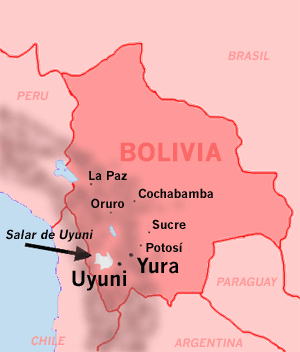|
New Bolivians
on the dial:
Radio Yura and Radio
Mallku
by Mika
Mäkeläinen
New Bolivian shortwave stations
are rare; and Bolivians which verify reception reports
are even fewer. In this respect some 60-meter-band
novelties are welcome exceptions; Radio Yura and
Radio Mallku have even bothered to respond to some
of their international listeners. Both are stations
with a mission - and much of their programming is
in the indigenous quechua language.
Radio Yura appeared on shortwaves
in spring 2000. The nominal frequency is given as
4715 kHz, but the station has been heard on approximately
4716.76 kHz. In comparison with many other Bolivian
stations, the deviation is minimal.
I picked up the station for the
first time on Sunday, April 30th, with an extended
live transmission from some local fiesta. I listened
to the station from 2300 UTC for about three and
a half hours, until the signal faded out because
of sunrise in Finland. During all this time, only
a few announcements were given from the studio.
Radio Yura is located in the
town of Yura, Provincia Antonio Quijarro, Departamento
de Potosí. The project to set up the radio
station was launched five years ago by a Catholic
TV station Canal 18 UHF, explains Rolando
Cueto, journalist and director of the TV station.
First they were able to get an
AM transmitter with a power of 2.5 kilowatts on
the frequency of 1200 kHz. The station has not been
listed in the WRTH. Over the years, the transmitter
deteriorated and they decided to replace it with
a 1-kilowatt shortwave transmitter. The shortwave
equipment was installed in the end of March 2000,
says Cueto.
The radio station is dedicated
to preserving what is left of the original culture
before Spanish conquistadores. According
to Cueto, the original culture has practically disappeared
in parts of the Bolivian altiplano, but appears
almost intact in the region of Yura.
A special feature of this culture
is an organizational form called the ayllu. The
station is catering to the needs of the local population
and thus uses the slogan La Voz de los Ayllus.
But yes, listening to the radio
is one-way communication. DXers need to get their
voice heard as well... luckily, the mail service
operates in this remote region, and you don't need
any detailed street address to get your reports
delivered. More surprisingly, the station also has
access to the Internet, and verie-signer Rolando
Cueto replied to me by e-mail.
Poor Cueto - now his mailbox is destined to be flooded,
hopefully not only with uninteresting QSL requests.
Radio Mallku,
the voice of peasants
I picked up Radio Mallku in November
1999 on the LEM132
DXpedition. Transmitting on 4796.48 kHz (the
official frequency being 4795 kHz), Radio Mallku
was booming after 2300 UTC. I heard their programs
titled Revista Matinal and Sirena Laboral.
The station signs off at around 8 p.m. local time
or midnight UTC. On Sundays programming lasts until
10 p.m.
 |
| Salar de Uyuni, a huge salt
plateau, is the biggest attraction of the region. |
Mallku is an indigenous
word and means cóndor. The station
was founded four years ago under the name of Radio
A.N.D.E.S, but was legalized only in September 1999
under its present name. Perhaps the illegality of
the operation was one reason why less verifications
from that period were received - at least I didn't
get a reply back then.
Aside from the mountain range,
A.N.D.E.S. referred to the initials of the five
provinces in the area: Antonio Quijarro, Nor Lipez,
Daniel Campos, Enrique Baldiviezo and Sud Lipez.
However, authorities wouldn't allow the station
to operate under the name Radio Andes, because it
closely resembles Radio Los Andes, a Tarija radio
station, thus forcing the station to find a new
name.
Radio Mallku's postal address
is Casilla No. 16, Uyuni, Potosí, Bolivia.
My verification letter was written by Erwin Freddy
Mamani Machaca, Jefe de Prensa y Programación.
He referred to two different slogans, which may
also be heard on the air: Voz de los Trabajadores
Campesinos and La Voz del Altiplano Sud.
The station is administered by Federación
Regional Única de Trabajadores Campesinos
del Altiplano Sud (FRUTCAS), which Freddy describes
as the dueño of the radio station.
In April 2000, when Freddy wrote
to me, the station employed only two people, but
must be using quite a lot of freelance or voluntary
workforce, as the station has five hours of programming
each weekday, and nine and a half hours on Sundays.
In addition to the very
informative verification letter, Freddy sent me
a photo of Hotel de Sal located in the middle
of Salar de Uyuni, a huge salt plateau. The
12.400-square-kilometer salt plateau is a major
tourist attraction, Freddy says. The city Uyuni
itself is an important railroad crossing, but otherwise
the area is a neglected backyard of Bolivia where
people are poor and climate is hostile.
(published on July
4th 2000)
  
|